(also known as : Metrosideros lanceolata, Angophora leiocarpa, Eucalyptus apocynifolia)
Sydney Red Gum or Rusty Gum or Smooth-barked Apple Gum
MYRTACEAE
| 
| (donherbisonevans@outlook.com) & Christine Ashe |
|

| 
| (donherbisonevans@outlook.com) & Christine Ashe |
|

The Apple Gums on the Central Coast of New South Wales were looking magnificent in December 2008. All red flaky bark and gnarled branches contorted into the strangest shapes. They are such an interesting tree; they blend effortlessly into the background of Eucalypt forest for most of the year and then when it is their time to shine, shine they outstandingly do. At this time of year it is the colours of the bark rather than the small white flowers that is drawing attention.
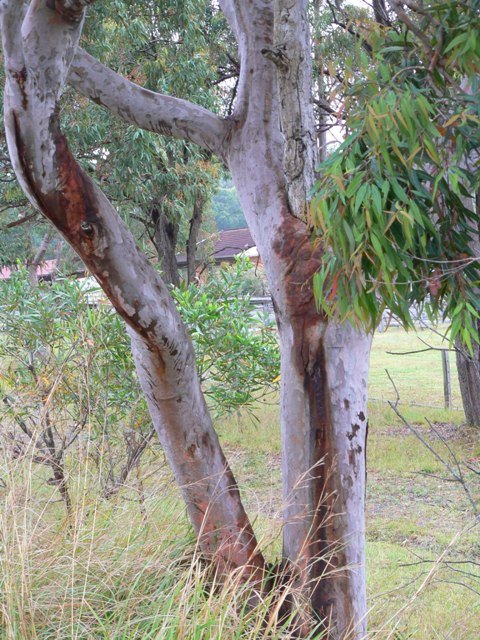
They are sometimes called Sydney Red Gum or the Rusty Gum. The Red Gum rather obviously because of the colour of their bark at certain times of the year and Rusty gum because at other times they exude rusty tears down the sides of their trunks.
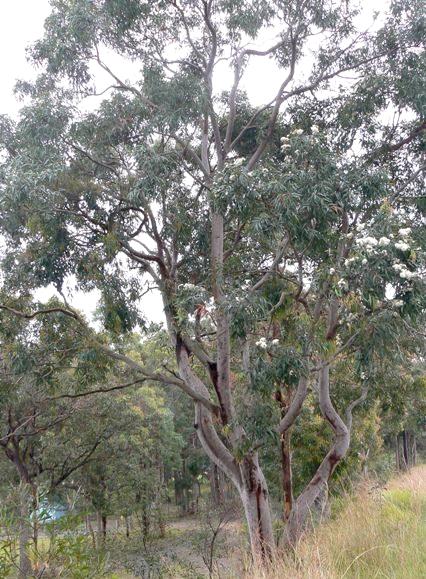
Sometimes rather a lot of rusty tears.
Angophoras are no longer in the “gum” or Eucalypt family.
They are now more properly in a category of their own – the Angophoras.
At the moment the Angophoras are described as having ten species on some sites, but that is rather fluid.
Even though they are no longer in the Eucalypt family they are closely related,
and Angophora costata looks very similar to its close relative, Corymbia maculata,
the Spotted Gum, particularly when it is shedding bark.
Both have smooth deciduous bark which is shed in thin elongated patches right to the ground
leaving a dimpled smooth finish that fades gradually to grey.
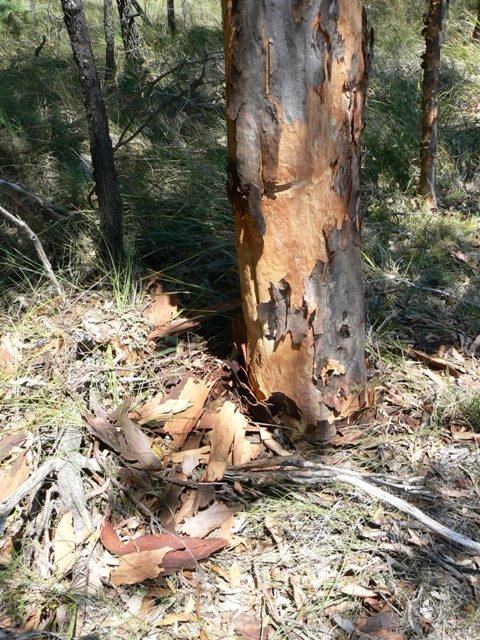
This tree has flexed its muscles and “popped” right out of its skin.
Angophoras are often grown in native gardens”.
They grow easily from seed and are widely available,
but they are a very large tree (15 to 25 metres) with the unfortunate habit of dropping limbs willy nilly,
so should be considered carefully for that position.
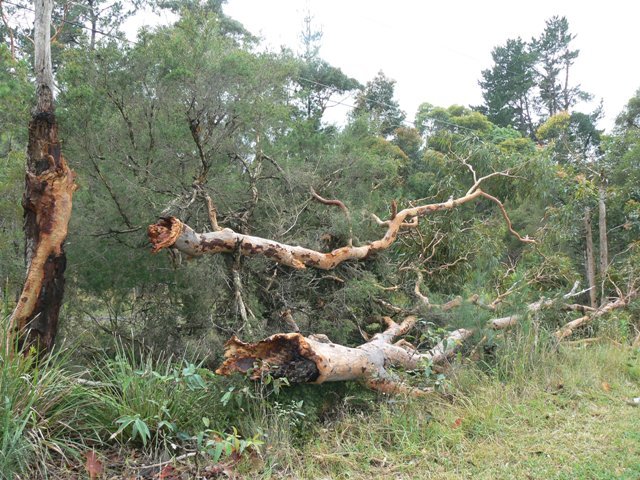
The left over calluses from fallen limbs add to their gnarled appearance.
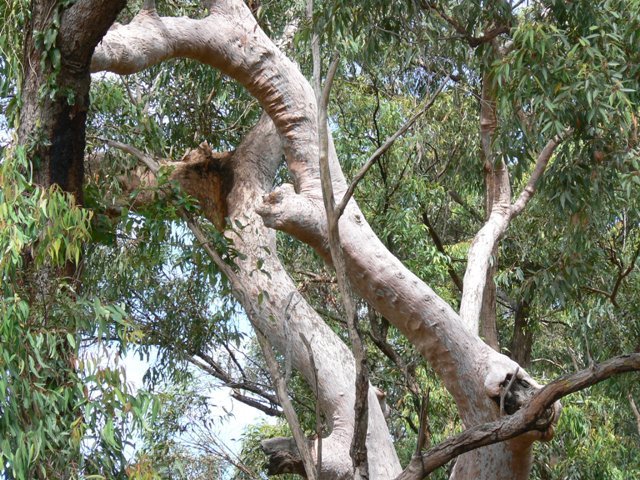
Where they are suitable they are a wonderful changeable tree, with bark colours varying from cream to orange with white, sweet smelling flowers.
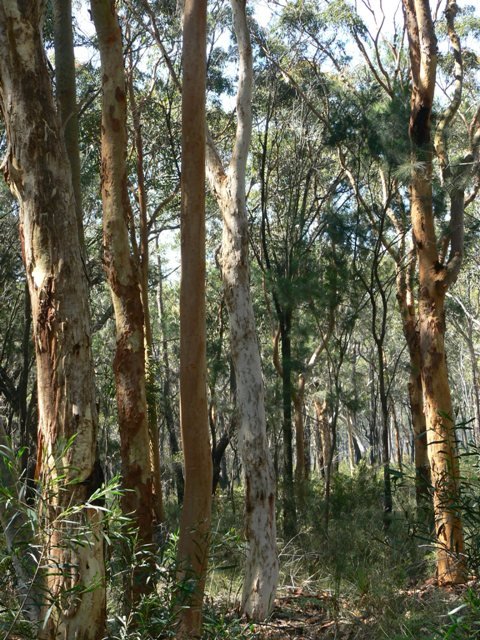
They naturally occur on well drained sandstone soils on the Central Coast of New South Wales
where there are still some wonderful mature stands.
They have been planted as city trees too.
We have noticed them in Oxford Square Sydney, still very young small trees but nevertheless looking beautiful and flowering well,
but we do wonder about their long term prospects given their propensity to drop limbs.
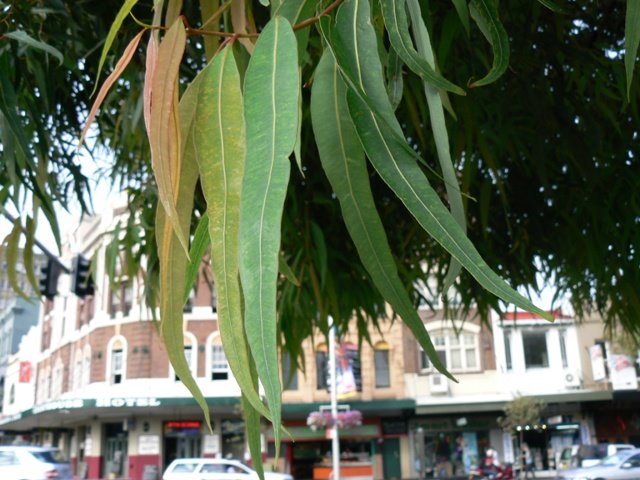
The leaves are pinkish when new weathering to dark green, typically gum shaped 6-16 cm long and 2-3 cm wide. They are carried opposite to each other along the stem.
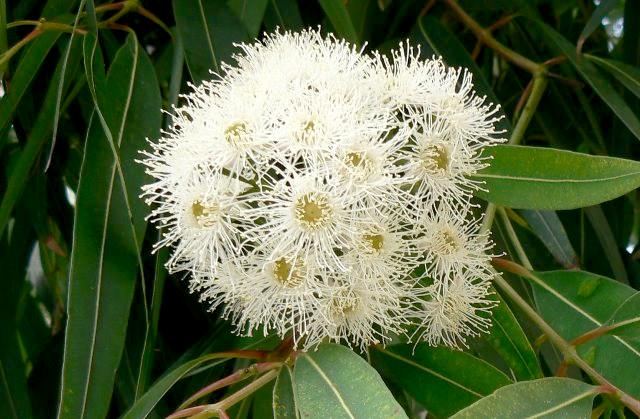
The flowers are simply gorgeous, always white in Angophoras, and very showy as they are in terminal panicles at the tips of branches. The flowering time is listed as November to January in most reference books, but we have photographed them as early as October and as late as February so it varies considerably. Also varying is the floriferousness. Some years you will have the trees smothered in blossom, others not.
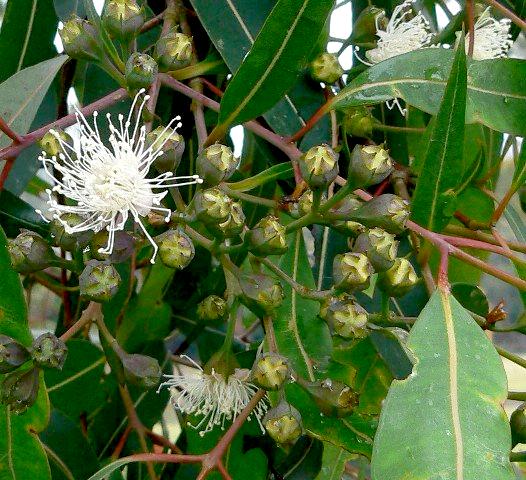
The true clincher to tell you whether you are looking at an Angophora or Eucalypt is in the buds and fruits. The buds are very distinctive with little pointy ribs, which unfold to release the stamens. There is no bud cap as there is in Eucalyptus species. The flowers simply “unwrap” and emerge.
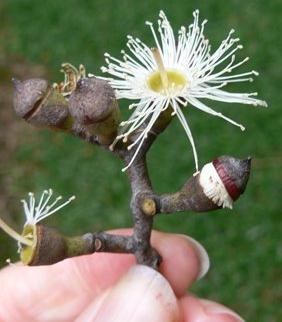
Compare with the obvious bud cap of Corymbia maculata.
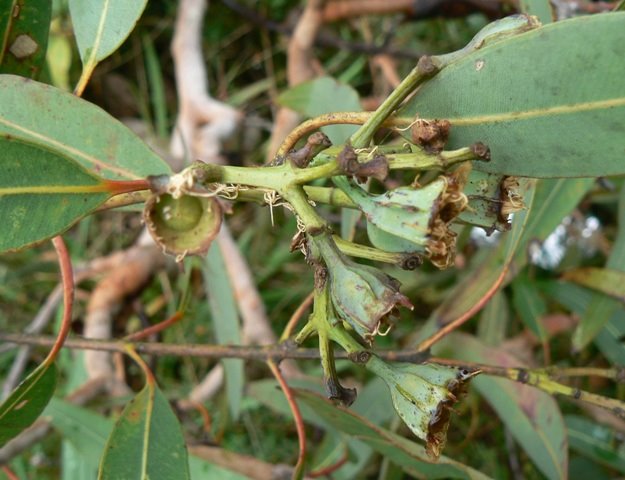
And the ribbed fruits are also intriguing. Costata means ribbed and the fruit capsule has very prominent ribs. If you are looking at a smooth urn shaped fruit then your tree is not Angophora costata.
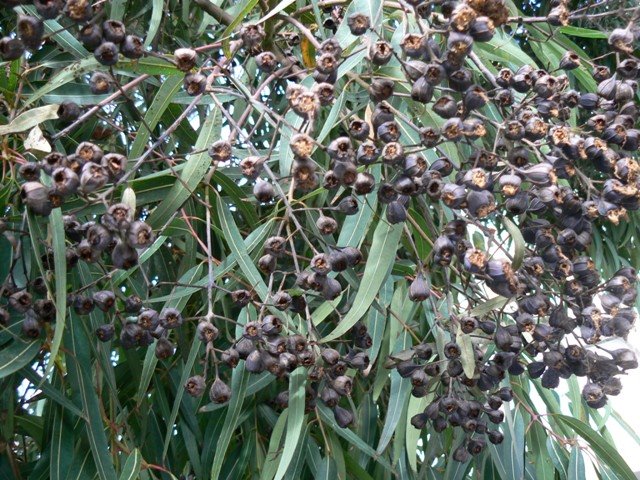
Look out for the gnarled appearance of Angophora costata in your neighbourhood
 butterflies |
 caterpillars |
 moths |
(updated 6 January 2009)